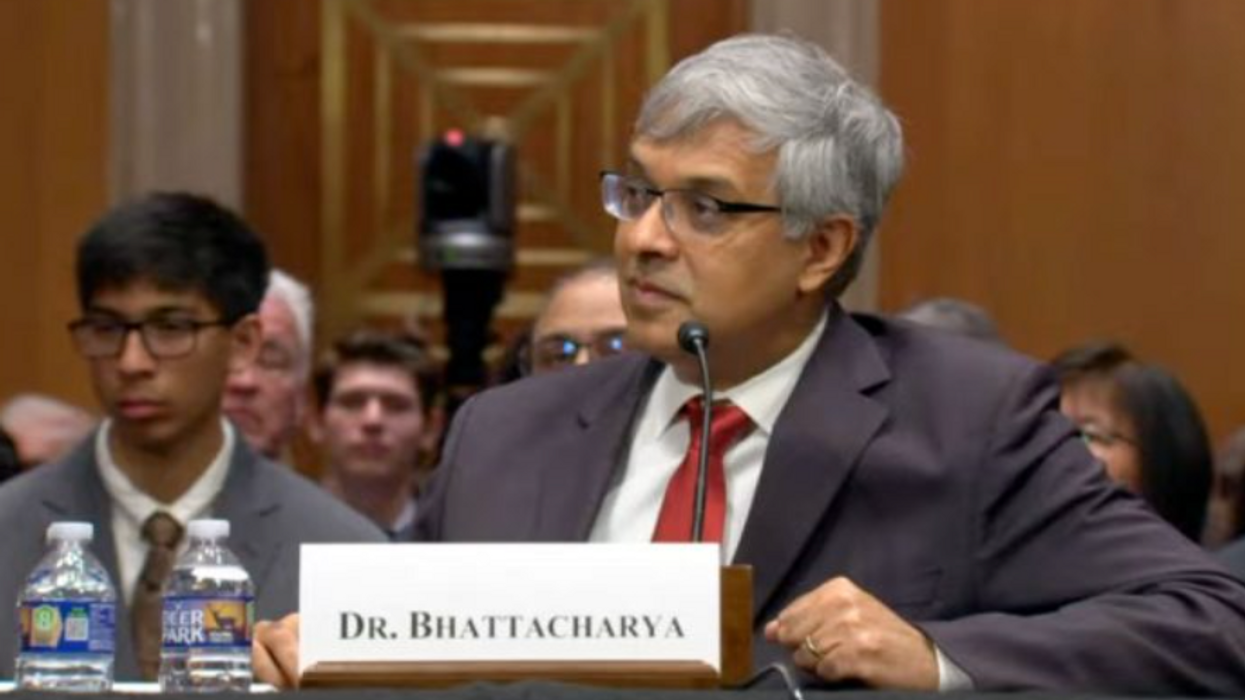Misogyny, Racism And Science Suppression At National Institutes Of Health
April 22 | 2025

Dr. Jay Bhattacharya
Photo via Sen. Tommy Tuberville/YouTube
Dr. Jayanta Bhattacharya, famous for leading the charge against lockdowns during the COVID-19 pandemic, appears to be overseeing a reign of terror at the National Institutes of Health. The immediate targets: women, minorities and respected scientists at the agency.
From various news sources last week:
- The Washington Post reported that 38 of 43 experts cut last month from the NIH review boards were women, blacks or Hispanic. About 200 internal scientists belong to review boards that oversee studies involving mental health, cancer and infectious diseases. None were given reasons for their firing.
- Multiple sources reported that one of the top food scientists at NIH has quit his post after the agency refused to let him speak to reporters about his nutrition study that questioned the addictiveness of processed foods. The findings contradict the beliefs of HHS Secretary Robert F. Kennedy Jr. "We experienced what amounts to censorship and controlling of the reporting of our science, Dr. Kevin Hall, 54, told the New York Times. Fearing Bhattacharya’s next move would be to interfere with the design of future studies, he decided to take early retirement. “That would make me hate my job every day,” he said.
- No one in the official world of autism research has been contacted by HHS or NIH to participate in a study aimed at identifying the causes of autism’s rising incidence, reported this week by the CDC. The HHS secretary said yesterday he would announce the study’s roster within two or three weeks. STAT followed up by contacting 10 organizations involved in autism research. None had yet been asked to participate in the study. “The scientists ASF (the Autism Science Foundation) works with have NOT been contacted, trust me, I’ve asked around,” Alycia Halladay, ASF’s chief science officer emailed STAT. Halladay also serves on the committee that coordinates autism research across federal health agencies. It hadn’t been contacted, either.
Do you remember what you were taught in ninth grade science? Ask a question; form a hypothesis; conduct an experiment; analyze the data; draw a conclusion. Given what’s going on at NIH, frontline reporters, scientific and medical journals and the general public will need to carefully monitor the make-up of every panel and scientist conducting research for NIH over the next four years to determine if the fifth step — drawing a conclusion — has been put at the front of the line when it comes to choosing members and awarding grants.
From Your Site Articles
- 'You Own This': Top GOP Senator Burned As Kennedy Wrecks Health Services ›
- 'War On Vaccines Has Begun' Under RFK Jr And Trump ›
- Bobby's MAHA Mania: Die Now, Eat Healthier Later ›
- Bobby Lied: Violating Senate Commitments, RFK Jr. Seeks To Thwart Vaccines ›
- RFK Jr. Hires Weird Anti-Vax Activist To 'Analyze' HHS Data On Autism ›
- At First HHS Press Conference, Kennedy Enrages Autism Families With Falsehoods ›
- RFK Jr. And Trump Risk Health Of 9/11 Heroes With Callous Staffing Cutbacks ›
Related Articles Around the Web









